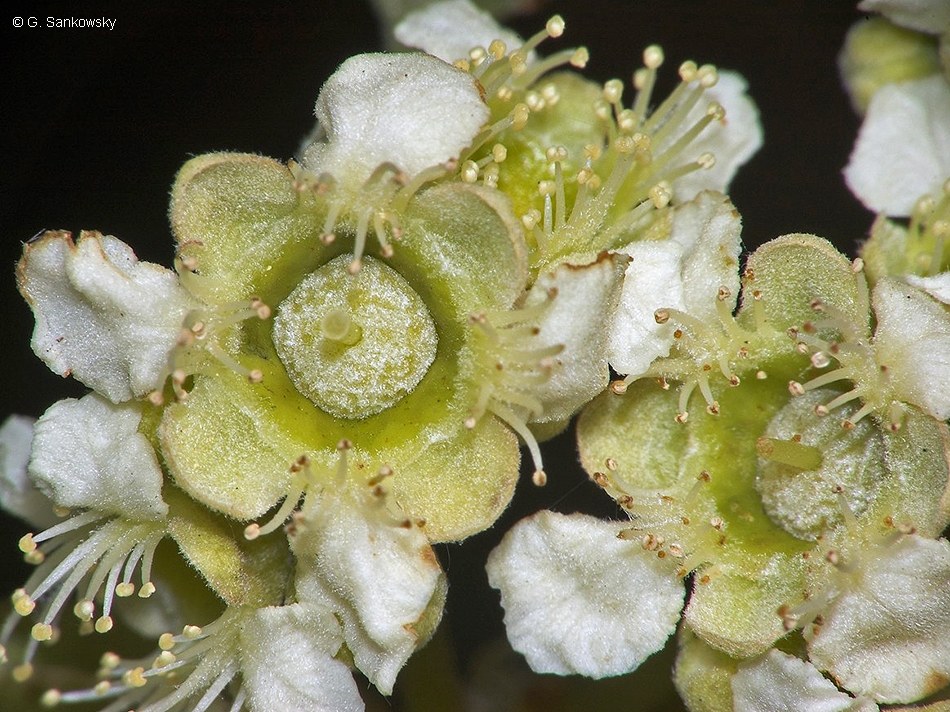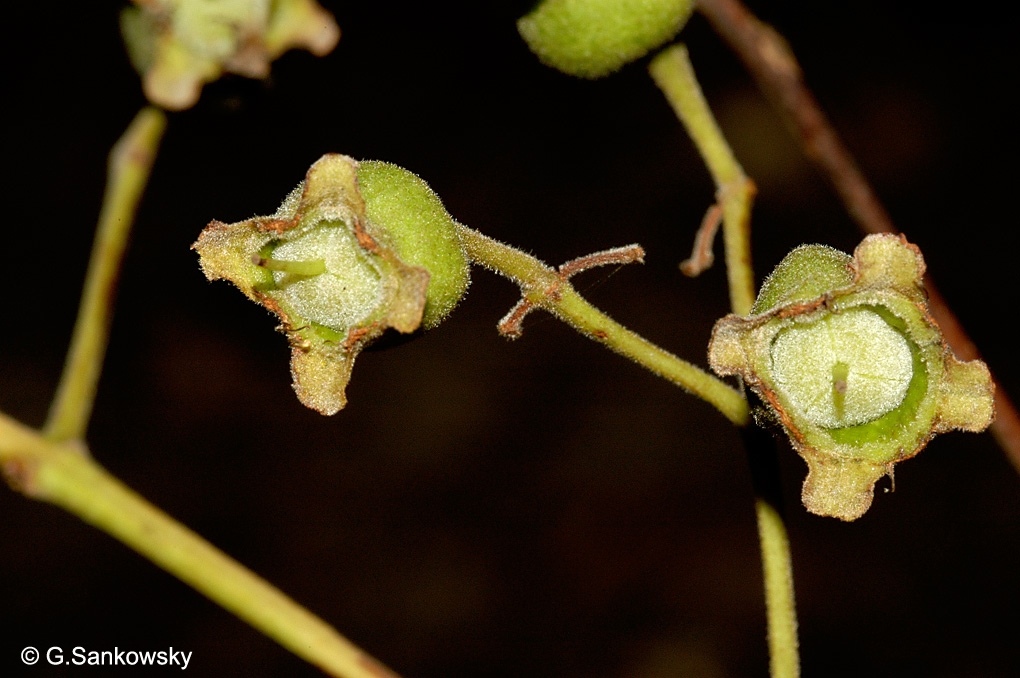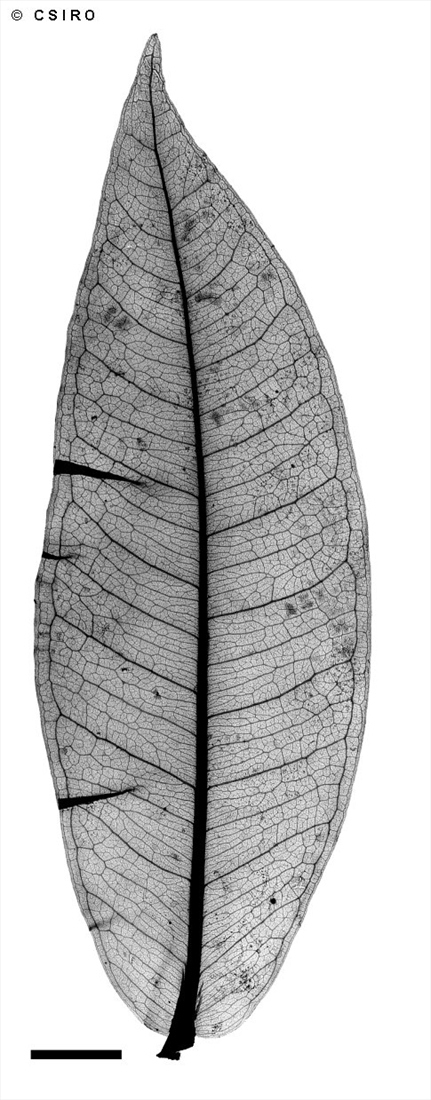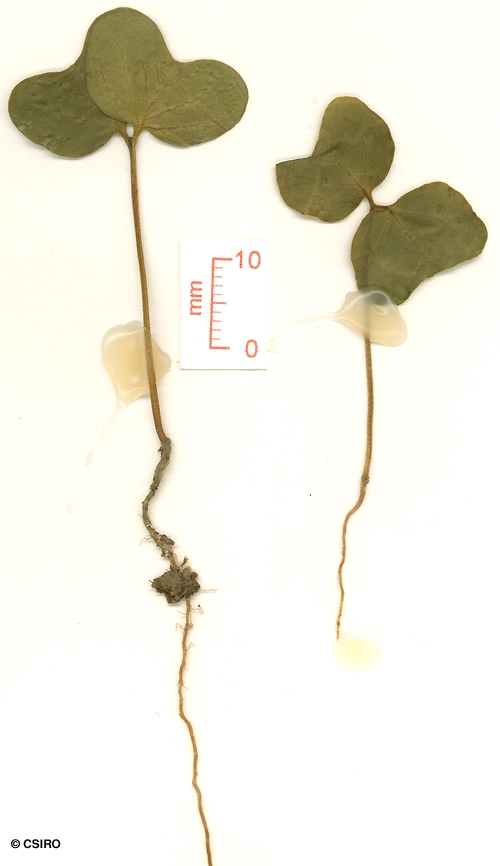Australian Tropical Rainforest Plants - Online edition
Sphaerantia discolor Peter G.Wilson & B.Hyland









Wilson, Peter G. & Hyland, B.P.M. (1988) Telopea 3(2): 262. Type: QUEENSLAND: State Forest Reserve 756, East McNamee Logging Area, 17 deg 40 S 145 deg30 E, Hyland 3565 RFK, 13.9.1977 (QRS). ISOTYPE: NSW.
Tully Penda
Pale brown, brittle stripes in the blaze.
Oil dots visible with a lens or just visible to the naked eye. Leaf blades about 9.5-14 x 3-5 cm. Leafy twigs often in whorls. Young leaves purplish red.
Inflorescence up to 12 cm long. Hypanthium about 4-5 mm broad, clothed in a fine, short indumentum. Sepals semicircular to oblong, about 1.5-2.5 x 2-3.5 mm, clothed in a fine, short indumentum. Petals orbicular, about 3-3.5 mm diam., oil glands absent or obscure. Stamens numerous, about 9-15 in each fascicle, filaments about 0.5-2.5 mm long, bearing short spreading hairs for most of their length. Ovary clothed in white hairs, ovules up to 35 per locule. Style about 3-5 mm long.
Cotyledons lobed, butterfly-like, about 12-15 x 15-20 mm, apex broadly emarginate, base rounded or cordate. Oil dots numerous. At the tenth leaf stage: leaf blade elliptic, apex acute or slightly acuminate, base cuneate, glabrous, midrib raised on the upper surface; oil dots scattered, small, visible with a lens. Cataphylls present among the true leaves. Seed germination time 11 to 21 days.





